“Invasions of exotic species cost Floridians over $500 million per year” -Ivegot1.org. May 16th-23rd is Florida Invasive Species Awareness Week and there will be plenty of educational resources to check out during this time to expand your knowledge on the issue! Florida Sea Grant has made some neat videos on some commonly found coastal invasive species. These short PSAs have information on what you can do to prevent the spread and impacts of these invasive plants and animals.
A Review:
When checking the literature, native species may sometimes be called indigenous or endemic. Non-native species are at times referred to introduced, exotic or slapping the word “non” in front of any of the above lingo.
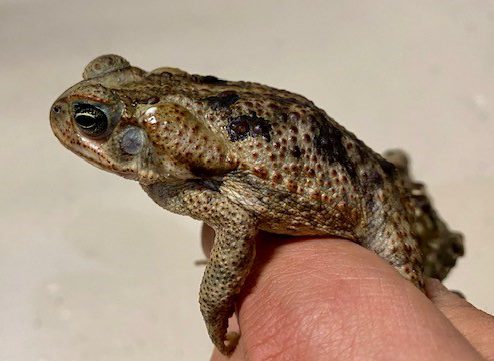
A definition provided by UF researchers for non-native species is: A species (subspecies, cultivar, selection, etc.) introduced (intentionally or accidentally) outside its natural past or present distribution.
The term invasive species as defined by the Florida Invasive Species Partnership (FISP): an organism (plant, animal, fungus, or bacterium) that is not native and has negative effects on our economy, our environment, and/or our health.
There are variations of on the definition of invasive species. One disputed version is that a “native” species can be invasive in some incidences when introduced to an ecosystem that it is not normally found in. Florida has both tropical and subtropical climates, 4 different growing zones and many diverse ecosystems. What’s native to South Florida can be alien to the Panhandle but could be considered “native” to Florida. This topic will most likely pop up again with climate change expanding habitable ranges of species and sea level rise/saltwater intrusion displacing others.
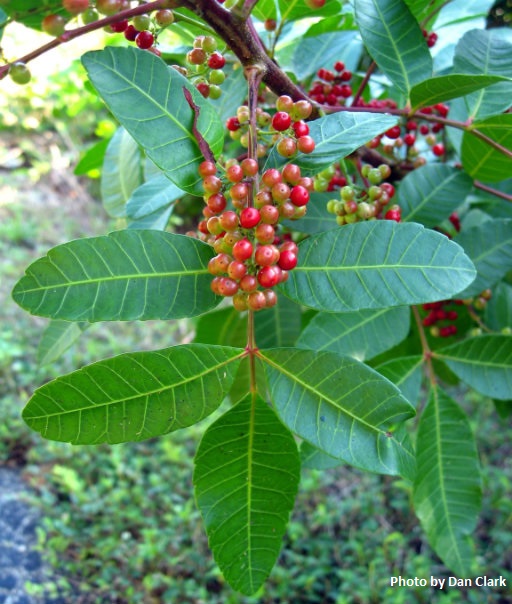
Invasive species can decrease biodiversity of native flora and fauna, this can be done by competing for resources (tilapia, non-native plants) or even preying upon the locals (tegus, pythons, iguanas, brown anoles, Cuban tree frogs). They can also cause plenty of economic harm from damaging crops (feral hogs, citrus psyllids), equipment/structures (zebra mussels) or by attempting to control the spread (aquatic plants, pythons). In some cases, invasive species can even be harmful to humans or pets by interacting with their noxious/venomous defenses (cane toads, lionfish, hogweed, Brazilian pepper) or through transmission of disease (giant snails, rats). The examples provided aren’t the only species that cause those negative symptoms but can give you some starting points on how certain species may be considered invasive.

Some common characteristics of invasive species include:
- Fast growth rates
- Short time to reproduction
- Production of many offspring/seeds
- Effective dispersal
- Tolerant to many habitats
- Efficient utilization of resources
What You Can Do:
Prevention is the best method to stop the spread of non-native species from becoming established and causing damage both the environment and our wallets. States have lists of prohibited species, conditional species and regulations regarding the transport of non-native species to attempt from having plants and animals invade the environment either through intentional means or by accident. The Florida Fish and Wildlife Conservation Commission (FWC) even has exotic pet amnesty days in which pet owners can surrender unwanted exotic pets to prevent the release of non-native animals into the wild. Commonly brought in animals are iguanas, monitor lizards and constrictor snakes that have gotten too large for the owner to properly care for. These events are free to the public and no penalties will be placed on the pet owner even if the animal is held illegally. Find more information about the program here.
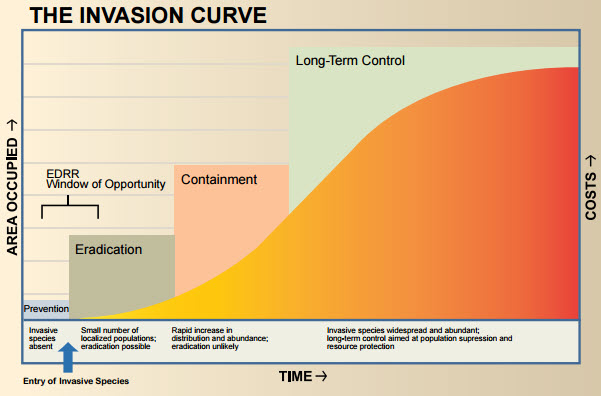
Established Species– A non-native species that does not need human help to reproduce and maintain itself over time in an area where it is non-native.
Complete eradication of species that have been established is very difficult, costly and unlikely under most circumstances; therefore, early detection and rapid response (EDRR) is crucial in attempt to stop the spread of a non-native species that could potentially become invasive. Reporting sightings of non-native or invasive species can be done in many ways. FWC promotes the use of the IveGot1 app in which users can take a photo, record the coordinates and whether there is one or multiple individuals of that species present. Reporting can also be done online at eddmaps.org/florida/report/ or by phone by calling 888-483-4681 (888-Ive-Got1). Playing around with the EDD Maps distribution page can give you an idea on which non-native species may be found in your county.
To become more involved, look up your local Cooperative Invasive Species Management Area (CISMA) group and learn how you can make a difference in your neck of the woods. There are several invasive species derbies/rounds ups which can be super fun to participate in. If diving is your thing join the FWC Reef Rangers to find out what you can do to control the lionfish population, fortunately this invasive is delicious and makes for great table fare.
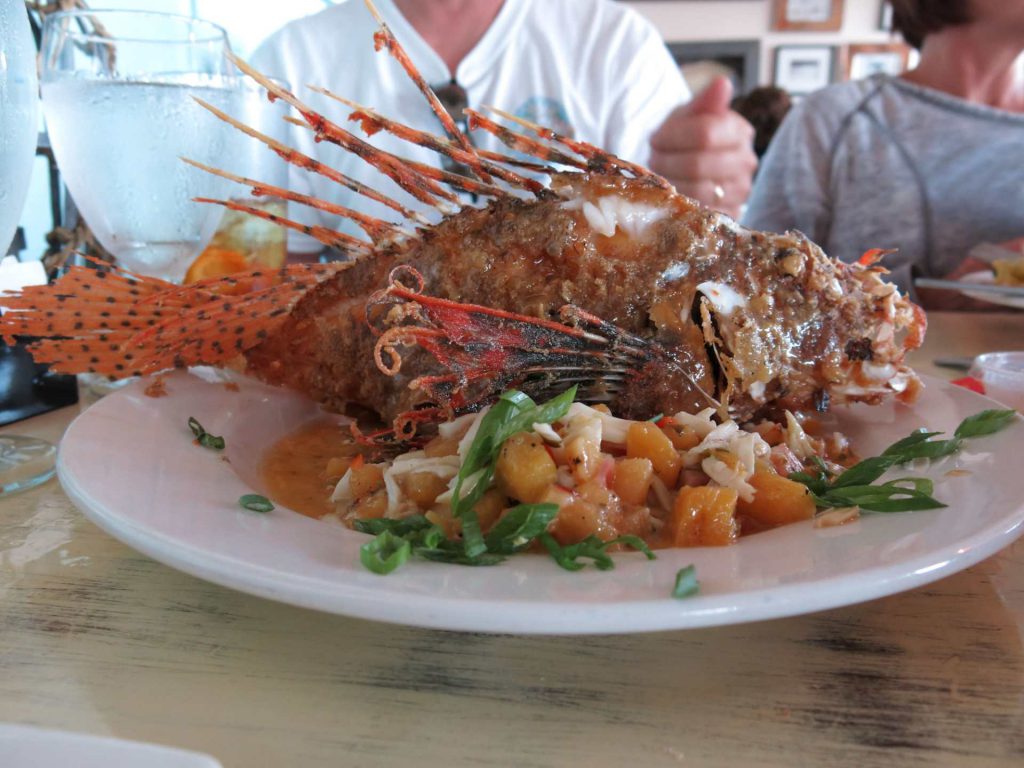
Don’t be scared! Not all non-native species are invasive, in fact you may already be surround by some. Food crops grown in Florida and around the country are an example of a non-native species which are beneficial and essential to society! Many of the ornamental plants in your yard are non-native, some have barriers to prevent them from becoming established or spreading; however, 82-94% of intentional introductions of invasive plants have been linked to the ornamental plant trade, forestry & agriculture. Examples of barriers that reduce the chance of dispersal can be mismatched climates, not having the required pollinating insects etc. Some plants have even been made sterile to prevent non-intentional spreading. In Florida, ~1,400 exotic species of plants have been introduced, ~11% have become established in the environment and ~6% (79) of the species are considered to be invasive. More information on Florida’s non-native and invasive plants can be found here.
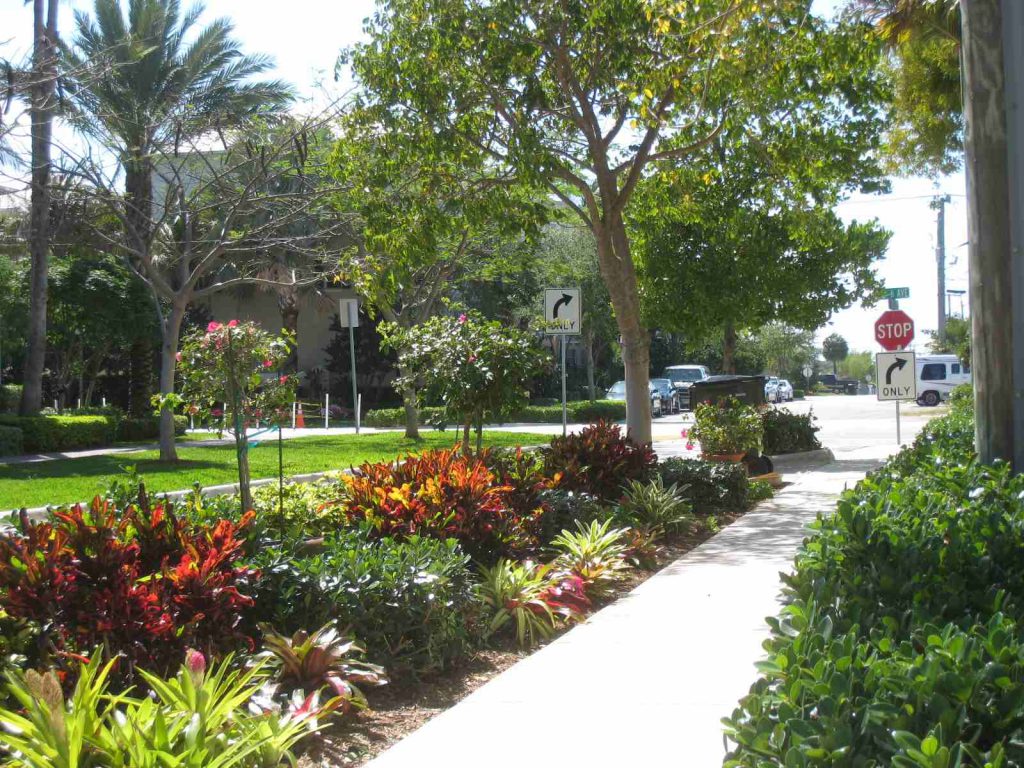
Non-native species do not always have to be negatively viewed but should be handled with care to reduce headaches for ourselves and the environment. If thinking about buying a pet, make sure you’re able to care for the animal for its entire life. Before bringing it home, research should be done on the all requirements needed for owning that animal when fully grown. When looking for new plants for around the yard, I suggest following Florida Friendly Landscaping principles and pick some native varieties. These plants will be best suited to your climate and require minimal upkeep compared to some ornamentals that may require increased irrigation or fertilization. If you still want to pursue non-native plants, you can check out this great tool by the University of Florida to filter out which plant species have a low risk of invasion or may not be a problem as well as find out which ones are prohibited.
For more information reach out to your county’s extension office or check out the state’s resources on non-native and invasive species. Counties may also have ordinances prohibiting certain exotic plants from being planted and a quick Google search can clear up a lot of future issues.
“An ounce of prevention is worth a pound of cure.” -Benjamin Franklin
Helpful Tools!:
EDD MapS Distribution Maps of Non-native and Invasive Species
Ive Got1/EDD MapS Reporting Of Non-native and Invasive Species
List of Cooperative Invasive Species Management Areas (CISMA) groups
FWC’s Exotic Pet Amnesty Program
FWC’s Reef Ranger Lionfish Program
FWC’s List of Conditional Non-native Species (Animals)
FWC’s List of Prohibited Non-native Species (Animals)
USGS Nonindigenous Aquatic Species website, great list of non-native invertebrates, vertebrates, and plants throughout the country. Interesting maps available on where these species were spotted.
Field Guide to the Nonindgenous Marine Fishes of Florida
Plants:
Florida Department of Agriculture and Consumer Sciences Invasive Non-native Plant Laws
University of Florida Non-native Invasive Plants- An Introduction
University of Florida Assessment of Non-native Plants in Florida’s Natural Areas Tool, great to use by filtering out “conclusion type” to see risk level of potential invasion
Florida Friendly Landscaping Principles
Florida Exotic Pest Plant Council
Collier County Informational Flyer and List of Prohibited Plant species
Collier County Non-Code and Prohibited Plant Species
 0
0

Comments:
March 30, 2022
Yes, there is. All information can be found here: https://www.collieredo.org/culinary-accelerator
March 11, 2022
Great comment! I have read that sago palm is susceptible to ganoderma sadly...
February 28, 2022
When folks who have lost a palm to ganoderma here, they usually want something that looks like a palm. Here in Indian River County, I suggest 3 plants which sort-of resemble palms: Sago Palm, which is a cycad but really resembles a plam Ponytail palm, which is not a plam nor a cycad and Pandanus, or "Screw Pine", which is neither a palm nor a pine but a very interesting tropical plant with a very large, interesting round cone-type seed pod when mature and spiraling leaf arrangement.
January 23, 2022
I admire your blog , it has of lot of information. You just got one perennial visitor of this blog!
August 11, 2021
Very, very expensive
June 24, 2021
That's a tricky one as slippers/bulldozers are not as targeted by commercial divers and I don't believe many slippers get caught in regular spiny lobster traps. I would reach out to some local seafood houses to see if they get them in occasionally, request them from a distributor or if they get some of their product by divers, ask if you could make a request or be contacted when they come in. I know a few Tampa area commercial divers and I believe they sell their speared fish to Shelly's Seafood and would check with them https://www.shellysseafood.com/. Good luck!
June 24, 2021
I am looking to buy 20 lb of slipper lobster bulldozer lobster spiny lobster and looking for some place in Tampa area to purchase them
June 1, 2021
I want to give thanks to you for sharing such good information
June 1, 2021
pretty good informative
April 20, 2021
Is there a membership for this program?
March 29, 2021
Hi Earl, I would be happy to take a look at a picture, my email address is sipos624@ufl.edu. Cane toads and other invasive species are usually/can be more common in urban and disturbed areas where the native critters are pushed out leaving an open ecological niche. I did a search of the Everglades Conservation Area 2 A and looks like it backs up to some urban areas on the East side. The FWC promotes reporting sightings of invasive species as the best form of management is early detection and rapid response before the species become established. You could report the sighting on the I've Got One app or on this website (url below), you can also see where some invasive critters have been spotted/reported as well https://www.eddmaps.org/distribution/ . For cane toads they may not mobilize a response as they have been established but researchers could find the information useful and interesting if they are moving more towards rural undisturbed areas. -Mike
March 27, 2021
I got this last night in Everglades Conservation Area 2A. miles from anything dry. It looks like a cane toad and is the size of a bullfrog. secretions from the glands behind the head. if it is a cane toad, and they are reproducing, bad news for natvive glades frogs. i cant figure out how to attach photos but glad to email to you.
January 8, 2021
Great video on sheepshead feeding. Thanks for posting this.
October 30, 2020
Our HOA is requiring residents to hire a tree trimming company to remove the royal palm seed pods ($55 per tree). Do you have any written materials to support nature's "self pruning" of royal palms? The royal palms on our property have never been pruned but the new HOA is determined to excessively prune these palms. Any help would be appreciated. Thank you for your time.
October 1, 2020
I just watched NBC2 news with Twyla Leigh and the Vanilla Bean vine plant. My friend, Dr. Henry Herman, Professor at FSW in Fort Myers, gave me a cutting of his plant and it was amazing how healthy it was and grew to flower. I had moved from that home, but would love to have samples to grow at my home in South Fort Myers. I am a master gardener and would love to help produce more Vanilla Bean Orchid plants. Please contact Twyla Leigh at twlaleigh@ufl.edu
September 24, 2020
I just watched NBC2 news with Twyla Leigh and the Vanilla Bean vine plant. My friend, Dr. Henry Herman, Professor at FSW in Fort Myers, gave me a cutting of his plant and it was amazing how healthy it was and grew to flower. I had moved from that home, but would love to have samples to grow at my home in South Fort Myers. I am a master gardener and would love to help produce more Vanilla Bean Orchid plants.
September 22, 2020
Hi Albrey, The pictures are great! I believe there is a huge value of having real fish pictures for identification. I'm beginning to stockpile photos of distinguishing characteristics for all the species I now catch/do a segment on. I'm trying to do a species profile/fillet video a week on edible fish found in Florida on our Collier County Sea Grant Facebook page https://www.facebook.com/CollierSeaGrant
September 22, 2020
Nice to see you using the helpful species identification clues provided in Fish Rules App. Swipe pics in Fish Rules App to see additional images and identification clues.
June 11, 2020
the internet. You actually know how to bring a problem to light
June 8, 2020
Thank you for your kind words! If there are any invasive species you're interested in particular, I would be happy to answer your questions or put you in contact with an expert within the University of Florida network. Feel free to reach out with any requests or ideas for future programming. Have a good one!
June 5, 2020
This short article was such a good read that will I will definitely recommend it to the friends! The last moment I’ve read some thing as professionally composed was with at https://www.onlinetutorforme.com/portuguese-tutor/. Thank a person for the professionalism and a watch regarding details. Is going to be pleased to read a lot more of your respective writing!
May 11, 2020
Thanks for your info--i didn't realize this was the problem with my porterweed until the plants were quite infected with the caterpillars. I've cut the stems as you suggest...but continually find many I've missed. The infestation is pretty established. What's the best course of action? I've cut back the porterweed substantially, but probably the moths are around and will continue to infect. If I remove the porterweed completely...and start over, must I continually (almost daily) check the plants for infestation? I've had the plants for a few years before the problem occurred.
May 3, 2020
i have a big infestation of this on my native porter weed. Didn't really notice it until it has really devasted my plants an is spreading. It is overwhelming the plants. The caterpiller appears to burrow down inside the stem and then the branch dies. It may be too late for me to control it by just cutting the infected stems out. How do I get these insects under control. Do I need to remove all the porter weed and let the ground remain dormant for a while? I have the infestation in my backyard, but have porterweed in the front also, and I observed early signs of infestation in the front. Would appreciate your advice. So glad you've identified my problem.
January 21, 2020
Thank you so much! Wish so many of my "natives" and Florida friendly, like Wild Coffee, were a bit more cold sensitive. Not sure how I'll have time and ability to protect my 100' hedge row, but we'll give it a valiant try.
January 9, 2020
You're very right about that! We completely agree!
December 27, 2019
I want to give thanks to you for sharing such good information!! North Shore Tree Services
September 23, 2019
Great Share! Hastings Tree Surgeon
August 22, 2019
Cool stuff. Tree Service
December 3, 2018
George, let's set up a time to talk! Give the Extension Office a ring: 239-252-4800 - Jessica
September 21, 2018
Who do I need too talk to the bosses on location??? Am a great talented Chef wanting my own business truck.And knowing dealing Bosses but you. Z And to put healthy great food for the tourists. I leave here for 5years and know know proveries and fisherman.. Gradauted CIAn 2005, like to know permits and costs before I get a food truck please let me know. Best Regards, George Vassilev
September 4, 2018
Hi Seth, the event has already passed. Feel free to call our Collier County Extension Office at 239-252-4800.
August 31, 2018
Hi I want to buy 2 tickets to the Collier county tropical fruit road tour please give me a number to contact someone the link is not working for me. thank you
August 28, 2018
For the royal poinciana caterpillar, carbaryl or a pyrethroid (bifenthrin) should work. Remember just to spray the bole of the tree from the ground up to 3 or 4 feet. No need to spray the canopy as explained in the posted FSHS article.
August 28, 2018
So what do we use to kill them? Seven?
July 18, 2018
Love the pics!!!!
March 15, 2018
Can't seem to be able to sign up for the ag tour. Would like to go, are there any available seats left. Thanks, Joyce Berkoski 239 732 5847
December 8, 2017
I want to compliment Jill for being the Naples face of American Farms. She is innovative knowledgeable and personable. You have a true Gem!
December 6, 2017
We in Iowa followed the hurricane devastation in Naples and its impact on American Farms. Kudos to Alex and the employees for their efforts to rebuild.
Comments are closed.